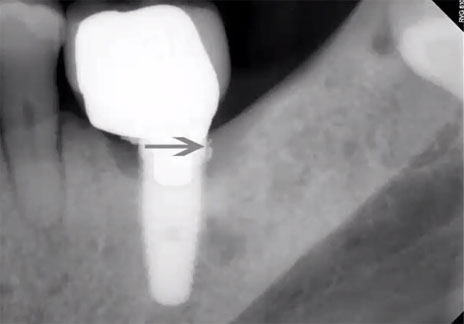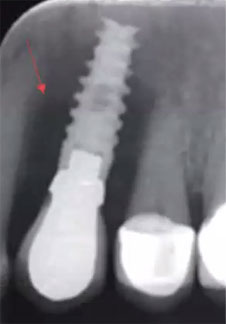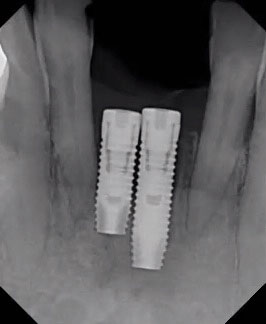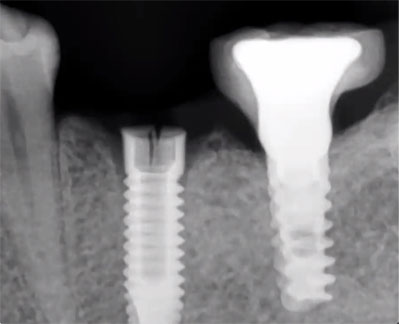Dental Implant Infection
Is it possible to Save an Infected Dental Implant?
Sometimes, dental implants can become infected, causing inflammation in the soft tissues and bone loss around the implant, often by a condition called Peri-Implantitis.
Peri-implantitis is an inflammation similar to gum disease and it affects the gum tissues and supporting bone surrounding a dental implant. Symptoms of dental implant infection include gums that bleed easily when brushing, tender or swollen gums around the implant and increased pocket depth around the implant. The problem with this condition is it can deteriorate the bone surrounding the infected dental implant and eventually cause the implant tooth to become loose. If you are at all concerned about the condition of any of your implants then find a periodontist for an evaluation or you can book an appointment with Dr. John Kong, a board-certified periodontist, here at Better Living through Dentistry.
Diagnosing an infected Dental Implant
One of the first things Dr. Kong will do is to take a dental x-ray of the infected dental implant to see if there’s any radiographic bone loss. He may also gently probe around the implant to assess the degree of the infection and inflammation. By carefully probing the area, he can hopefully make an early diagnosis of any signs of infection as early detection is key if the implant is to be saved.
Similar to gum disease on a tooth, one of the problems with this condition is that it often doesn’t create any pain and as a result, patients are frequently unaware that an implant is infected. Dr. Kong will assess the source of the inflammation as there are many etiology to peri-implantitis. Peri-implantitis can be caused by problems such as left over cement stuck on the implant, implants being placed too close to each other or angulation of the implant in the bone, poor oral hygiene, poor bone quality, systemic issues like diabetes, smoking, fracture of the implant and overloading of the implant.
An increasing number of studies report peri-implantitis to affect up to 30% of all implants placed and suggests anaerobic bacteria to be the main culprit.


Treating Peri-implantitis
Once infection of the dental implant is diagnosed, treatment will depend on the amount of bone lost and the esthetic impact of the implant in question. Then it will be important to clean the surface of the infected dental implant and to regenerate the lost supporting bone through bone grafting if possible. Some of the ways you can clean the surface of the implant is through surgical and non-surgical therapy such as 1) local debridement, 2) implant surface decontamination, 3) Anti-infective therapy, and if there is advanced bone loss, 4) Removal of the implant itself. Treatment for peri-implantitis is very technique sensitive depending on the type of implant that has been used, location of the dental implant and severity of the bone loss.
For mild infection, Dr. Kong may use antibiotics where as more severe infection may require surgical intervention to mechanically and chemotherapeutically disinfect around the dental implant.


Can an Infected Dental Implant be Saved?
If the infection and bone loss is at the beginning stage, bacterial plaque and calculi could be removed non-surgically along with possible antibiotic therapy and modification of prosthetic design. The earlier an infection is treated, the simpler the treatment and better the chances of success. If bone loss is moderate to advanced, it may be necessary to surgically clean the affected soft peri-implant tissues, decontaminate the microimplant surface, and finally apply bone regeneration techniques aimed at recovering the lost bone. If a dental implant has already become loose due to severe infection it may not be possible to save it. In this case, the implant will need to be removed and the local site grafted with bone. It might be possible to place another dental implant at a later stage, once it’s clear of all infection and regeneration of new bone is confirmed.
If you have dental implants, it’s very important to make sure you keep a periodic check-up and professional cleaning every four to six months. This allows Dr. Kong to check your dental implants for any signs of early inflammation and infection so that prompt action can be taken if anything is found.